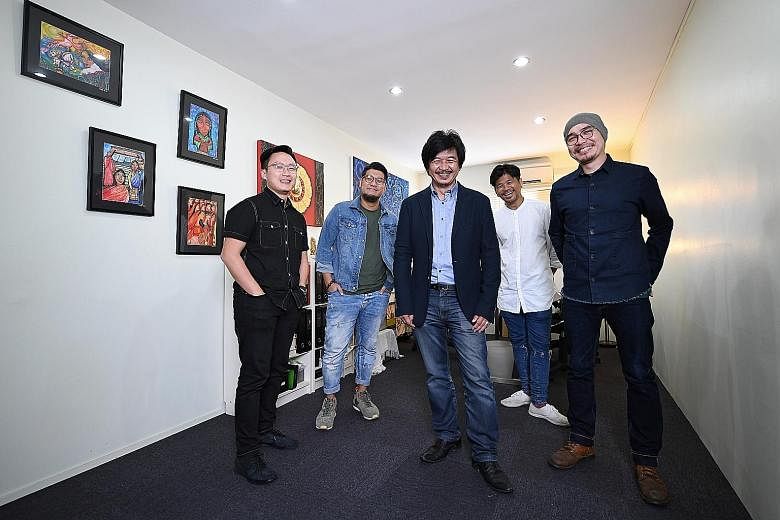A pair of Original Nevi Loafers, which is on sale online at US$11.99 (S$16.80), down from US$15.99, looks as good a bargain as any.
But buyers who click to purchase the shoes on the Madeshoes website are led, instead, to a video revealing a hard truth - the loafers are made by Nevi, an 11-year-old Indian boy who lives at the railway station with his mother.
Madeshoes is not an actual online retailer but is part of the Little Hands Campaign, named after the little hands of the underprivileged children it tries to help.
The campaign highlights the link between the fashion bargains people in affluent cities constantly search for and the child labour that makes these discounts possible.
It was started in February by social development organisation Magical Light Foundation, which aims to tackle child labour and raise awareness of the educational needs of disadvantaged children.
Besides the online video, an exhibition was held at Lasalle College of the Arts earlier this year to inspire people to help these children, through working with or donating to the foundation. 3D moulds of the children's hands were displayed alongside the shoes they had made.
Mr Ben Cheong, the foundation's founder, said: "We believe education is key to empowering these children to become architects of their own future."
This is just one of the many charity projects that Mr Cheong, a former gemstone trader who turns 58 today, is pursuing.
He went into full-time charity work in 2005 to "do my part to help others", and has since helped with the building of more than 60 educational institutes for poor communities across Asia.
The foundation, whose departments are headed by 15 regular volunteers, is also working with its counterparts in India to build a vocational school for up to 500 children in Lucknow by late next year. Children at the school will be able to pick up skills, such as air-conditioner repair and welding, to make themselves employable outside sweatshops.
"As the children are from a lower caste, having a degree is still not going to get them employed. Teaching them skills is more useful, especially when they come of age," said Mr Cheong.
He said he gives priority to those who reach out to him, as he believes their initiative shows they want to help themselves.
Beneficiaries would have to do their part, such as by helping with the construction of the school.
The foundation is also taking on the unenviable task of persuading parents, including those whose children are employed as child labourers, to let them attend school.
"Some families, especially those from the lower castes living in slums, don't see the need for education. They are only concerned with how kids can support the household - through begging, stealing or otherwise," said Mr Cheong.
The father of two cited the example of two boys he met in India in February, both of whom had cancerous growths on their faces.
When he offered to pay for them to have surgery and treatment, the boys and their families rejected his offer immediately as the tumours drew pity and allowed the boys to beg for a living.
"They felt I was taking their rice bowl away," said Mr Cheong.
Likewise, some other families also declined to let their children go to school.
One way in which the foundation tried to get around this was to target families with many children, so that one child can attend school while the others continue working to support the family, he said.
"Many of the children are breadwinners. We (the foundation) cannot provide for their families if they stop work to go to school," he said.
Mr Cheong, a nominee for the 2015 Singaporean of the Year award, said he is not bothered by rejection. "I will not be disappointed. People can become successful even without going to school."
Besides his current projects, he has set his sights on championing yet another cause.
This August, he will lead a team of Singaporean and Nepalese doctors to Cambodia to operate on 500 cataract patients.
As the operations cost about US$100 each, the non-profit foundation is looking for donors.
Mr Cheong, who has been doing charity full time for 12 years, said: "In reality, all of us can do something good if we want to. There is no need for prerequisites - it's not about waiting to be prompted by an event but about inspiring yourself."

